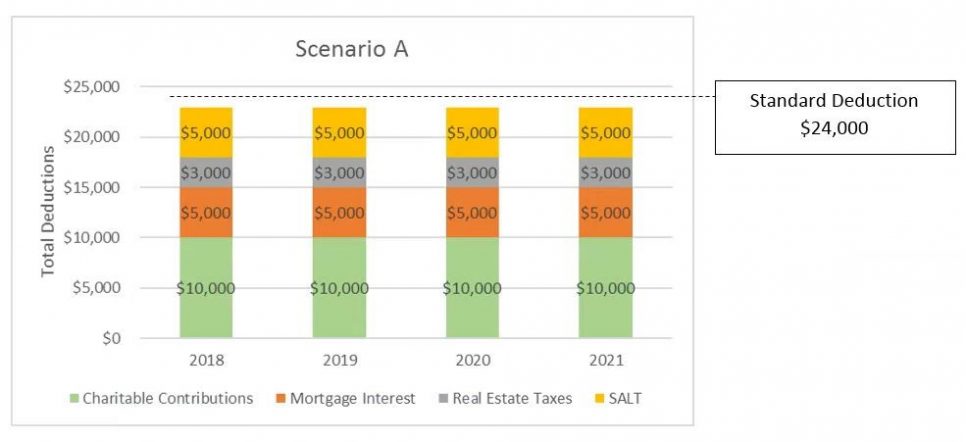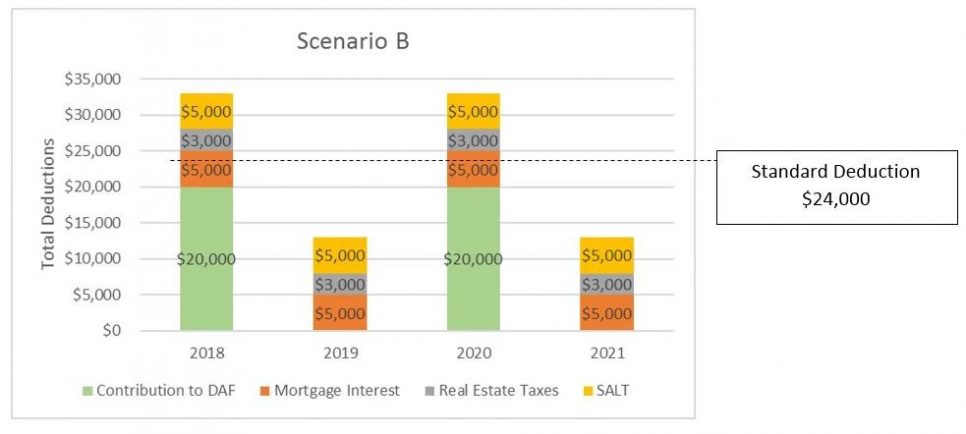You love giving. You don’t love paying taxes. The new tax structures may hold some good news for you.
Some people think that the large increase in the new Standard Deduction could possibly remove the advantage of deducting charitable contributions. Here’s why: if your total deductions don’t exceed the new larger standard deduction, there is no advantage to itemizing your deductions when you file your taxes.
You can still make tax-deductible donations to charities, but it won’t make a difference on your tax return unless your total deductions now exceed $12,000 for single filers and $24,000 for joint filers. Common deductions include charitable contributions, mortgage interest, real estate taxes, and state and local taxes.
HOWEVER, by creating a Donor Advised Fund (DAF) at the Greater New Orleans Foundation, you may able “have your cake and eat it too.”
Tax Looping
This technique involves doubling up tax-deductible payments into one year, then minimizing these payments the following year in order to take advantage of the large standard deduction.
Let’s look at an example (See Scenario A) assuming the following couple who make $100,000 a year have the following deductions:
- Charitable Contributions: $10,000
- Mortgage Interest: $5,000
- Real Estate Taxes: $3,000
- State and Local Taxes (SALT): + $5,000
- Total Deductible Expenses: $23,000

Since the standard deduction for this couple is $24,000, they will get a $24,000 deduction. If we followed this example over 4 years, it would total $96,000 in deductions.
Now let’s see what happens when they “loop” their giving and contribute $20,000 to a Donor Advised Fund (DAF) every other year (see Scenario B). In 2018 and 2020, they are able to itemize $33,000 worth of deductions. In 2019 and 2021, they take the standard deduction of $24,000 instead of itemizing. Their 4-year total deductions are now $114,000.

Consistent Contributions to Charities
Tax looping was already practiced by some, but without a DAF, our couple would have to drop large sums into charities one year followed by a year of no giving. With a DAF, you are able to get a significant tax benefit and distribute funds out of your DAF on a consistent basis. Keep in mind there is a minimum balance of $500 that must be maintained in the DAF.
Teaching the Next Generation
Establishing a DAF is also a great opportunity to make charitable giving a family affair. Start by distributing funds as a result of a family discussion, and gradually teach children how to get involved and support causes they value. Eventually, delegate some of the responsibility of distributing funds to the next generation.
Learn more about Donor Advised Funds. Stop in or call the Greater New Orleans Foundation to see if this would be right for you.
Tim Hilterman, CFP®, CAP® is a financial advisor with Whitcomb & Hess CPA’s and Financial Advisors. He earned the Chartered Advisor in Philanthropy® (CAP®) designation to empower people to think big, make a positive impact in the world and feel the joy of using their wealth, talents, and experience to improve the lives of those around them.
This post first ran in the Richland County Foundation blog and was shared with their permission.